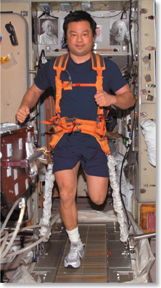Types of Muscle Fibers There are two principal types of skeletal muscle fibers—red and white. The types of muscle fibers vary in their specific functions. Red muscle, or slow-twitch muscle, contains many mitochondria. The dark color of red muscle comes from small blood vessels that deliver a rich supply of blood and from an oxygen-storing protein called myoglobin. The abundant mitochondria and generous supply of oxygen allow these fibers to derive their energy through aerobic respiration and work for long periods of time. Red muscle is useful for endurance activities like long-distance running.
White muscle, or fast-twitch muscle, contracts more rapidly and generates more force than does red muscle, but its cells contain few mitochondria and tire quickly. White fibers are useful for activities that require great strength or quick bursts of speed, like sprinting.
Exercise and Health Regular exercise is important to maintain muscular strength and flexibility. Muscles that are exercised regularly stay firm and increase in size and strength due to added filaments. Muscles that are not used become weak and can visibly decrease in size. Regular exercise helps to maintain resting muscle tone—a state of partial contraction. Muscle tone is responsible for keeping the back and legs straight and the head upright, even when you are relaxed.
Aerobic exercises—such as running and swimming—place strong demands on the heart and lungs, helping these systems to become more efficient. This, in turn, increases physical endurance—the ability to perform an activity without fatigue. Regular exercise also strengthens your bones, making them thicker and stronger. Strong bones and muscles are less likely to become injured.
Resistance exercises, such as weight lifting, increase muscle size and strength. Over time, weight-training exercises will help to maintain coordination and flexibility.

FIGURE 32–11 Preventing Muscle Loss Without gravity, many muscles go unused. An astronaut in space may lose up to 5 percent of muscle mass a week. Exercise helps to maintain muscles—and bones, too.
32.2 Assessment

-
Review List the three types of muscle tissue.
Compare and Contrast Compare and contrast the structure and function of the three types of muscle tissue.
-
Review What structures make up a skeletal muscle?
Explain Describe how a muscle contracts.
Predict A type of poisonous gas destroys the enzyme that breaks down acetylcholine. What effect do you think this gas has on the body?
-
Review Explain the role of tendons in movement.
Apply Concepts In training for an Olympic weight-lifting event, which muscle fibers would be the most important to develop?
VISUAL THINKING
Create your own model to show how actin filaments slide over myosin filaments during a muscle contraction. Include as much detail in your model as possible.

Table of Contents
- Formulas and Equations
- Applying Formulas and Equations
- Mean, Median, and Mode
- Estimation
- Using Measurements in Calculations
- Effects of Measurement Errors
- Accuracy
- Precision
- Comparing Accuracy and Precision
- Significant Figures
- Calculating With Significant Figures
- Scientific Notation
- Calculating With Scientific Notation
- Dimensional Analysis
- Applying Dimensional Analysis




